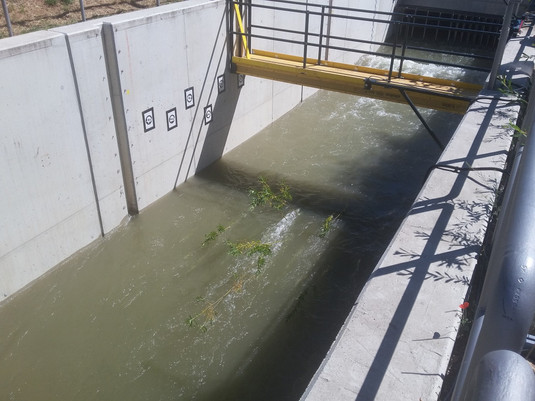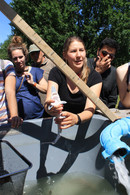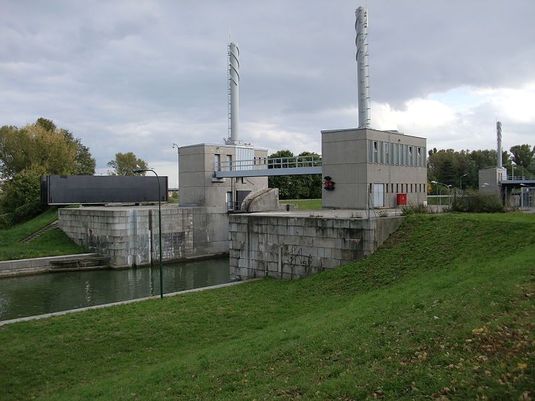Danube Excursion: Krems—Vienna
Krems → Vienna
25.08.2017
Research Channels, Sterlets, and the Danube Island of Vienna
With another early start, it was lucky that the memorable apricot jam, a local specialty, provided a good incentive to get up in time for breakfast. Only five minutes behind schedule, we departed from Krems, with its beautiful historic center and surrounding vineyards, for Vienna.
Schleuse (lock) Nussdorf. Photo Credit: Christoph Netz.
Nussdorfer Lock and Weir
Our first stop was the Nussdorfer Schleuse, a lock and weir where the Danube canal branches off from the Danube in the northern outskirts of Vienna. Between the canal and the main river lies an outdoor research channel that is used to investigate the flow dynamics of different riverbeds and flood plains. Here, we met with Christine Sindelar of the University of Natural Resources and Life Sciences in Vienna (BOKU), who conducts her research at the outdoor research channel. The building of the research channel was part of the DREAM project (Danube River Research and Management), which was cofinanced by the City of Vienna and the European Union. The slope between the Danube and the canal allows the scientists to experiment with flow rates of 10 cubic meters per second, and hence provides unique opportunities to make 1:1 scale simulations of river flow and sediment dynamics.

Planted willows in the lock. Photo Credit: Christoph Netz.
The Danube transports significant amounts of sediment, but its natural flow regime has been altered. Sediment is now largely trapped behind hydroelectric power plants, and dams and jetties have increased the speed of the river’s current. This leads to riverbed erosion, which causes the groundwater level to drop and bridges to become unstable as their bases erode. Sediment accumulates in front of hydroelectric power plants, threatening their operation. The sediment is often contaminated, making removal and processing very costly. The state and involved companies have strong interests in researching ways to stabilize the riverbeds and create a more functional sediment regime; they therefore support the research that Sindelar and her colleagues are conducting.
Read the full article on Seeing the Woods.






